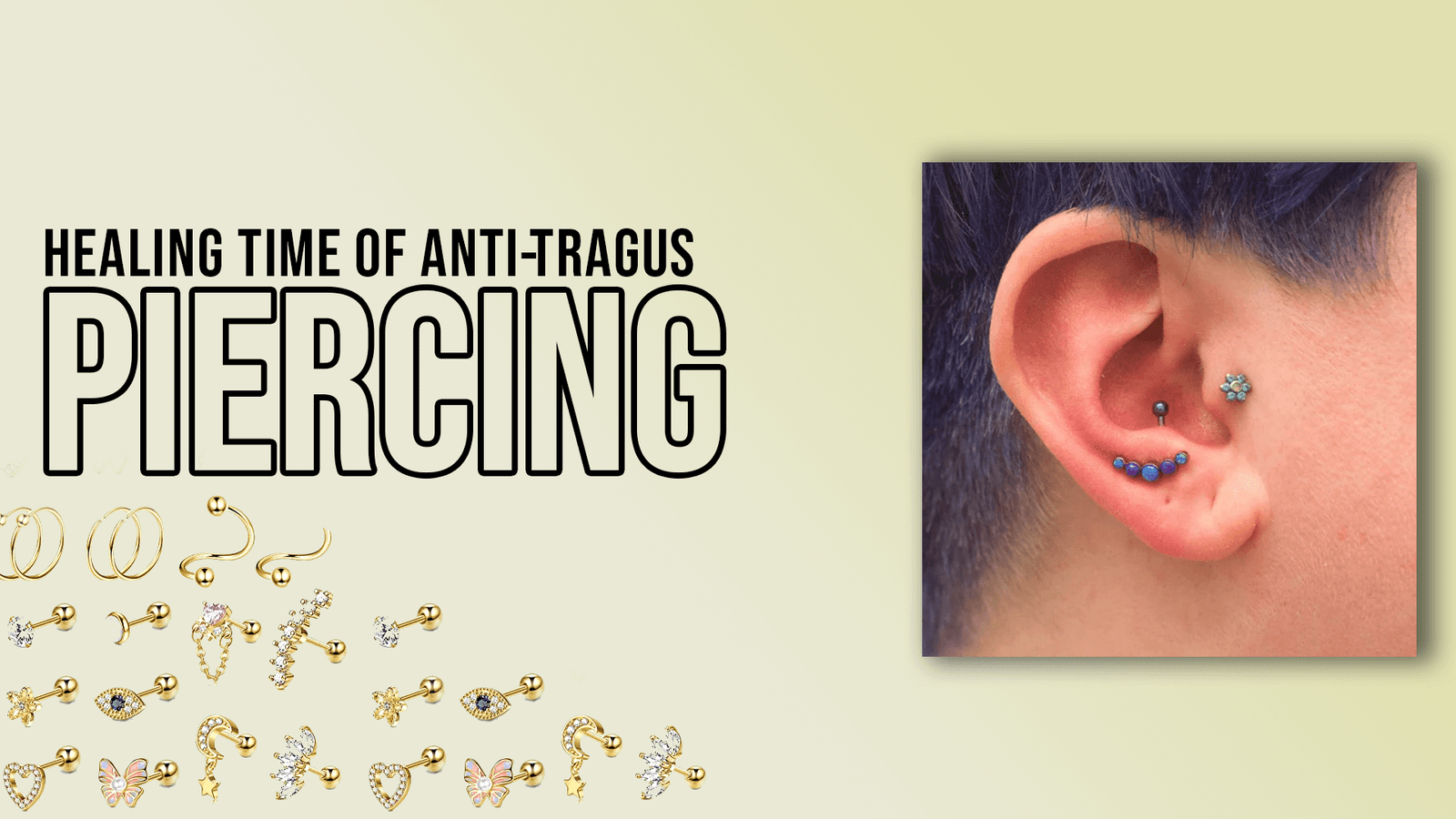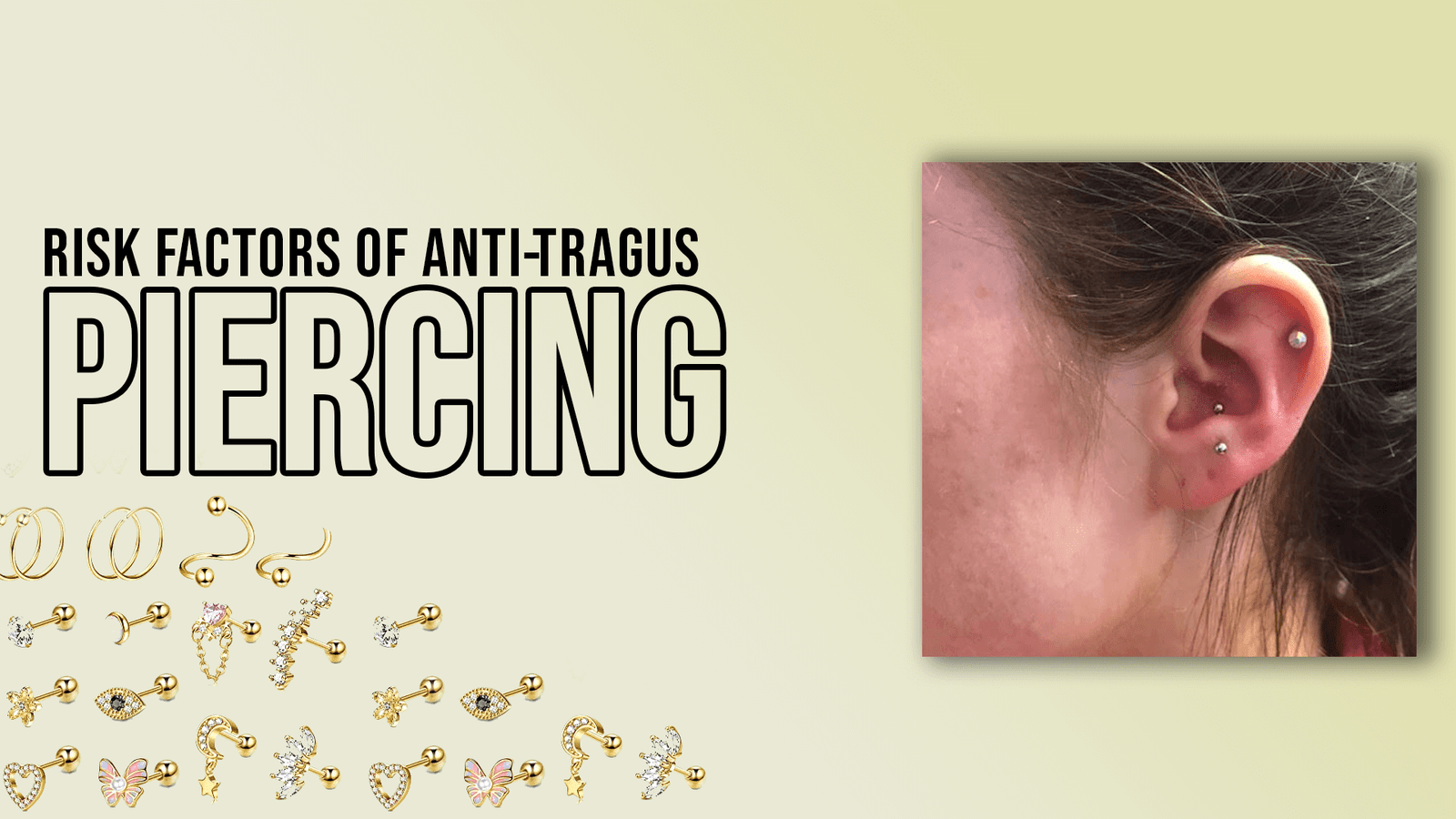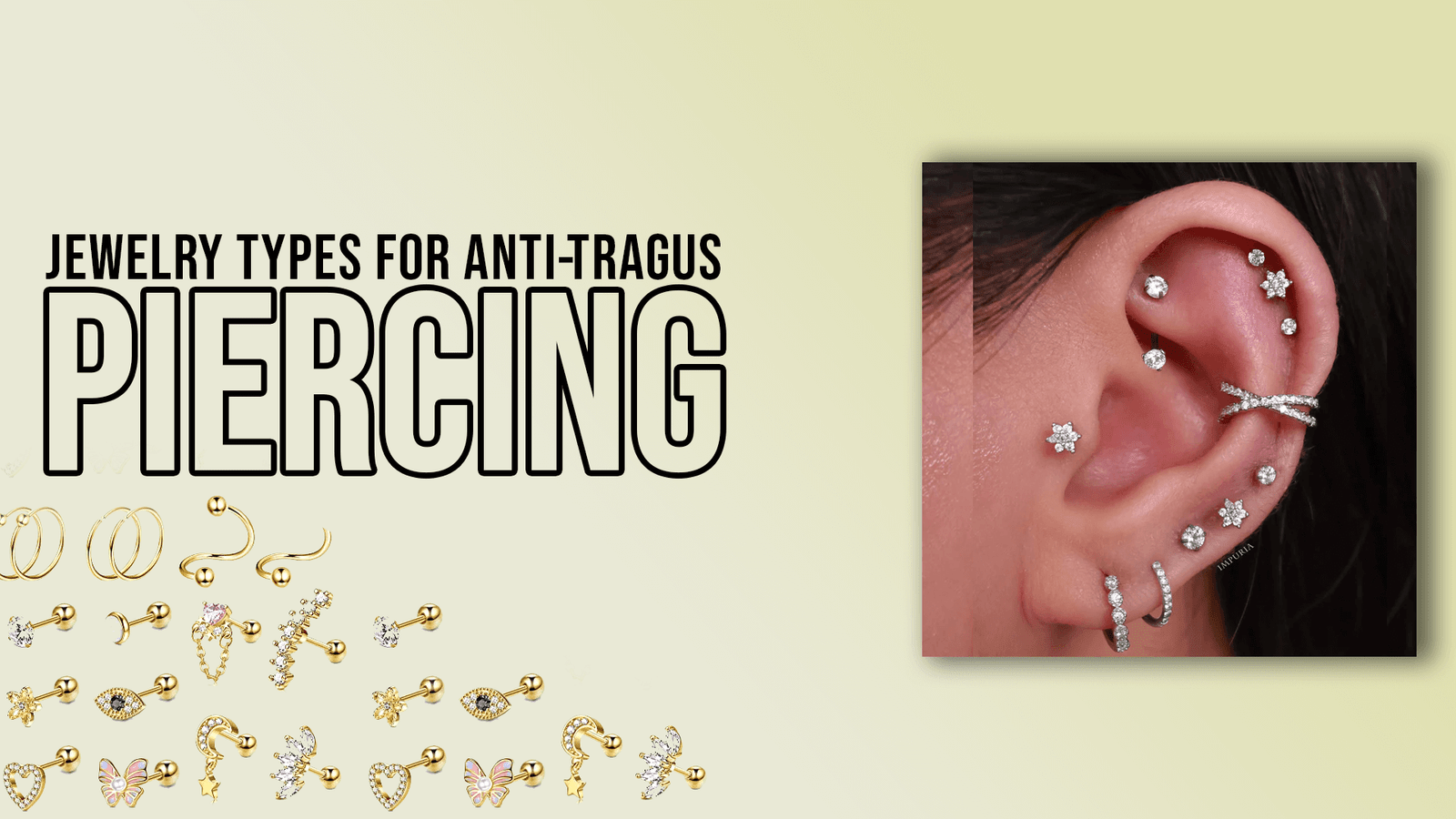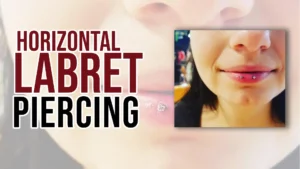Are you someone who enjoys using body art to express themselves? If so, you might be familiar with several piercing styles. Several alternatives range from the traditional earlobe piercing to the risky septum piercing. However, an anti-tragus piercing can be a perfect choice if you want something more distinctive and off-the-beaten. The anti-tragus piercing, positioned on the outer border of the ear just above the earlobe, has become increasingly well-liked in recent years. It might not be as well-known as some other piercings, but it’s a fantastic way to add uniqueness to your appearance and stand out from the crowd.
Of course, before you go ahead and get an anti-tragus piercing, it’s important to do your research and make sure you understand all of the ins and outs of the procedure. We’ve put together this in-depth tutorial to teach you everything there is to know about anti-tragus piercings because of this, from the process to how to keep up a fresh piercing. So whether you’re a seasoned piercing enthusiast or a newcomer to body art, read on to discover everything you need to know about anti-tragus piercings.
What is Anti Tragus Piercing?
The anti-tragus is situated just above your earlobe, across from the tragus. You’ll probably feel a triangular-shaped piece of cartilage protruding if you pinch your earlobe. The anti-tragus is that. The anti-tragus is ideal for individuals looking for a piercing that is a little off the beaten path, those trying to spice up their ear lobe piercings, or anyone looking to add a slight variation to their cartilage party. The anti-tragus is frequently extremely small, making it a challenging piercing for some people. But even without piercing the actual anti-tragus, you may still achieve a similar effect because it’s above the flexible lobe.
Pain Level of Anti-Tragus Piercing
One of the most painful piercings is the anti-tragus piercing. Numerous people report that it hurts more than previous cartilage piercings they have undergone. Although each person’s pain level is different, the anti-tragus is not the best piercing for beginners if you know your pain threshold is lower.
Of course, how much pain you receive will depend on the skill level of your piercer? Experienced piercers will complete the surgery quickly and confidently, minimizing the time you may endure pain. They will also know when and how to instruct you to breathe, making therapy more comfortable.
Healing Time of Anti-Tragus Piercing

You might plan on a recovery period of six months to a year. Like any other piercing, the anti-tragus will heal externally first. Thus, it may appear fully healed even if it isn’t. Before discontinuing aftercare procedures or switching out your jewelry, consult your piercer.
Aftercare for Anti Tragus Piercing
The anti-tragus tends to be simpler than other cartilage piercings that are more concealed, such as the rook or daith, because it is effortless to reach during aftercare. However, it is also vulnerable to jolts and snags that could grab the jewelry and harm the piercing site because of where it is. Here are some considerations for treating the anti-tragus.
- Use caution when using your earphones and headphones. It won’t be easy to listen to music while wearing any kind of headwear because of where the anti-tragus is. The back of the jewelry will be pressed by ear buds and the front by headphones. Avoid headphones until your piercing heals, or locate larger headphones that cover your full ear without touching it.
- Remove any alien objects. In addition to headphones, there are additional issues with which you should be aware. It’s possible for hair, clothing, and other entities to tangle in jewelry or transmit dangerous bacteria around the healing piercing. As the piercing heals, keep hair back and away from it. Keep any hats or scarves well away from the piercing. Be cautious when wearing new clothes to avoid tearing the jewelry from its piercing and harming it.
- Keep the jewelry in place. Scars and lumps of cartilage are common after a cartilage piercing has healed. When the skin around the jewelry experiences trauma, this occurs. Take off your jewelry to help your piercing heal properly and the skin.
Risk Factors of Anti-Tragus Piercing

- An anti-tragus piercing can cause some swelling and drainage, which are expected for cartilage piercings: “If it’s your first cartilage piercing, the placement may itch and feel uncomfortable. The absence of appropriate blood supply to the ear cartilage may cause this reaction. This makes it challenging to heal more quickly.
- It is also advised to apply a warm compress to the area to lessen some of the pain during aftercare. Keeping objects that come into contact with the piercing, such as pillowcases and linens, particularly clean, is just as important as maintaining proper hygiene, which includes washing the anti-tragus area.
- Gold and the golden-colored crust will form around the piercing, noting that this is a possibility with any piercing. You can also expect some soreness and slight bruising, which is normal.
- Try to avoid picking at any yellow discharge you may encounter. Spray the saline solution on the region in its place.
- You must take extra care if you have reactive or sensitive skin because these skin types are prone to inflammation and discomfort. Reactive skin problems can cause redness and, in rare instances, allergic reactions.
- Before getting your anti-tragus pierced, speak with your dermatologist if this describes you. Last but not least, select an immaculately clean salon and ensure that a licensed specialist treats you to avoid the unpleasant side effects of any piercing.
- You can switch out your jewelry once your piercing feels tender. To replace it, slip through your piercing and twist off the top of the barbell. Ask a piercer if you’re unsure if it has fully healed.
Cost of Anti-Tragus Piercing
The average cost of anti-tragus piercing ranges from $40 to $120. However, it depends on different factors, including the studio’s location, the piercer’s expertise, and the type of jewelry being used. The majority of salons charge for both the service and the jewelry. The starting price for a service is $35 for one piercing. Jewelry for anti-tragus piercings ranges from $30 to $180, depending on the style and substance. Choose a reputable piercer who will charge slightly more. Because cartilage is readily harmed, you must select a skilled professional. To prevent problems from skin allergies or jewelry rejection, you should also choose starter jewelry made of good-grade metal.
Jewelry Types for Anti-Tragus Piercing

You could anticipate that the tiny canvas would constrain your options for jewelry types. However, there is more adaptability than expected because the anti-tragus and the lobe share a region.
Studs
The jewelry for the anti-tragus piercing that is the most popular is cartilage studs with a flat disc back. You can get a basic bead, gemstone, or cute charm that gives any cartilage cluster a little flair.
Curved or Circular Barbells
Small barbells that are curved or circular are another option. These include dual bead tips, drawing attention to your anti-tragus piercing and giving you a more assertive look. A straight barbell modified to have screw able beads on each end is known as a “curved barbell.” In most cases, one of the beads is permanent, so to insert or remove the piercing, you only need to unscrew the other. Depending on aesthetics, curated barbells may have a slightly curved or round design. They are the jewelry that our specialists recommend most for anti-tragus piercings.
Ball Closure Rings
Ball closure rings are preferred for all piercings. However, Brooks points out that wearing any ring lengthens the healing process. This kind of jewelry consists of a captive ball-closing ring or captive bead ring and typically needs to be changed out at the piercer. If you decide to do it yourself, it’s suggested that you spend money on specialized pliers for opening and closing this kind of piercing.
Hoops &Captive Bead Rings
Some individuals choose tiny beaded rings or seamless hoops. This allows the anti-tragus to take a stand when combined with other hoops to form a cohesive cartilage cluster.
Conclusion
In conclusion, whether you’re an experienced body modification enthusiast or simply curious about piercing trends, the anti-tragus piercing is a unique and edgy choice that improves your look and style. While it’s not for everyone, those who opt for this piercing often find it a subtle yet eye-catching statement piece. Of course, as with any piercing, it’s essential to research, choose a reputable piercer, and take good care of it when the piercing is healing, as it is a crucial time for you. But if you’re dedicated to putting in the effort, the anti-tragus piercing can be a fun and exciting addition to your body art collection. So try it and see if this daring piercing is the perfect fit for you!





